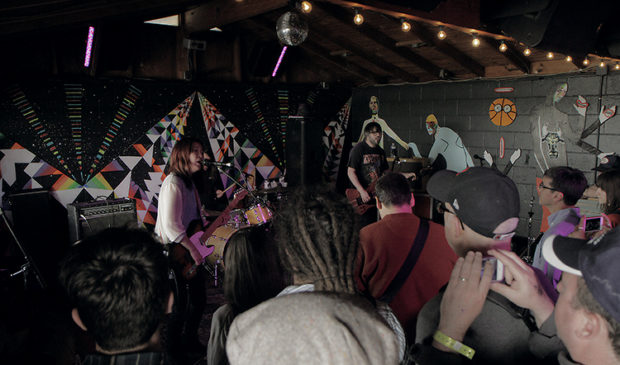Arts Commission shares concerns amid increased creative space funding
Monday, October 28, 2019 by
Chad Swiatecki The city’s expanded program to assist local creative spaces with rent and capital expenses came under criticism from members of the Arts Commission last week.
During a presentation on the recommended recipients of the Creative Space Assistance Program, commission members said city staff needs to improve transparency and communication in future annual funding rounds, and said there is concern in the community about the decision to make for-profit arts and music venues eligible for city funding.
No vote was taken on the item, which was a staff briefing that required no action from the commission.
Following a spring and summer application and review process of 43 possible recipients, the five-member review panel selected 26 spaces that will receive portions of the $750,000 in total funding for the program, which was expanded from the former Art Space Assistance Program. The earlier version had $200,000 in total funding and was available only to nonprofit groups, with City Council approving the expanded effort in August as part of an overall revision to local economic incentives programs.
The city’s Economic Development Department is currently working on finalizing contracts with the groups, with maximum awards of $50,000 to be used for rent stipends, gap financing for property acquisition or capital improvements to create more revenue.
Erica Shamaly, director of the city’s Music and Entertainment Division, received questions from commissioners about the intention and planning of the new program, including a call for collecting as much data as possible on race and other demographics of applicant groups to address equity concerns.
Commissioner Bears Rebecca Fonte said there is debate in the arts community about the decision to allow for-profit venues – such as music venues that serve alcohol – to receive tax money to improve their business prospects.
“People are going to ask why we’re (funding) for-profit organizations, so I need to be able to tell them why. I’m not convinced it’s the right thing to do personally, but I would be more convinced if there was a way for it to be more of a loan for for-profit venues,” Fonte said. “Or if the idea is you’ve got a bunch of for-profit venues that exist, then hire a bunch of artists and there’s trickle-down money for artists who wouldn’t get it. I’d like to make sure the money is trickling down and those artists are getting paid.”
Shamaly said the limited business hours of venues emphasizing live music, and the property tax increases on desirable commercial property in the core, are making it increasingly difficult for those spaces to operate profitably.
“If you were to dig into the (profit and loss statements) of a for-profit live music venue or any of these spaces, the assumption is that since you’re able to sell alcohol that you’re raking in the money, which is simply not the case,” she said. “The music division has spent time educating on how expensive it is to run a live music venue or a for-profit theater or gallery space in Austin because you don’t have any ability to get any kind of break in taxes and are paying every kind of tax that you can imagine, while at the same time paying for the infrastructure to have a live music venue … all of these cost money. Pretty much why our live music venues have been roped into this program is they are running as nonprofits as well because there are no profits being made.”
While some commissioners also pushed for future rounds of the program to prioritize geographic equity and increased publicizing of the application process, commission Chair Jaime Castillo said the transition to the new program left many in the arts world feeling disconnected from what was going on.
In particular, Castillo said he was bothered by the lack of updates on the recommendations made in September but only publicized earlier this month following the release of a city memo.
“I would like to express my frustration because ASAP (Art Space Assistance Program) was a program that came out of Cultural Arts and I felt like the commission was involved in that and we helped advocate for that. And the switch to CSAP (Creative Space Assistance Program) kind of left us in the dark and there was not enough information coming to us, not enough transparency of the process,” he said. “It was annoying to find out the list of recipients from KUT. Where the (CSAP) is for both arts organizations and music spaces, it would have been nice to know that list before KUT.”
Photo by la-underground made available through a Creative Commons license.
The Austin Monitor’s work is made possible by donations from the community. Though our reporting covers donors from time to time, we are careful to keep business and editorial efforts separate while maintaining transparency. A complete list of donors is available here, and our code of ethics is explained here.
You're a community leader
And we’re honored you look to us for serious, in-depth news. You know a strong community needs local and dedicated watchdog reporting. We’re here for you and that won’t change. Now will you take the powerful next step and support our nonprofit news organization?



